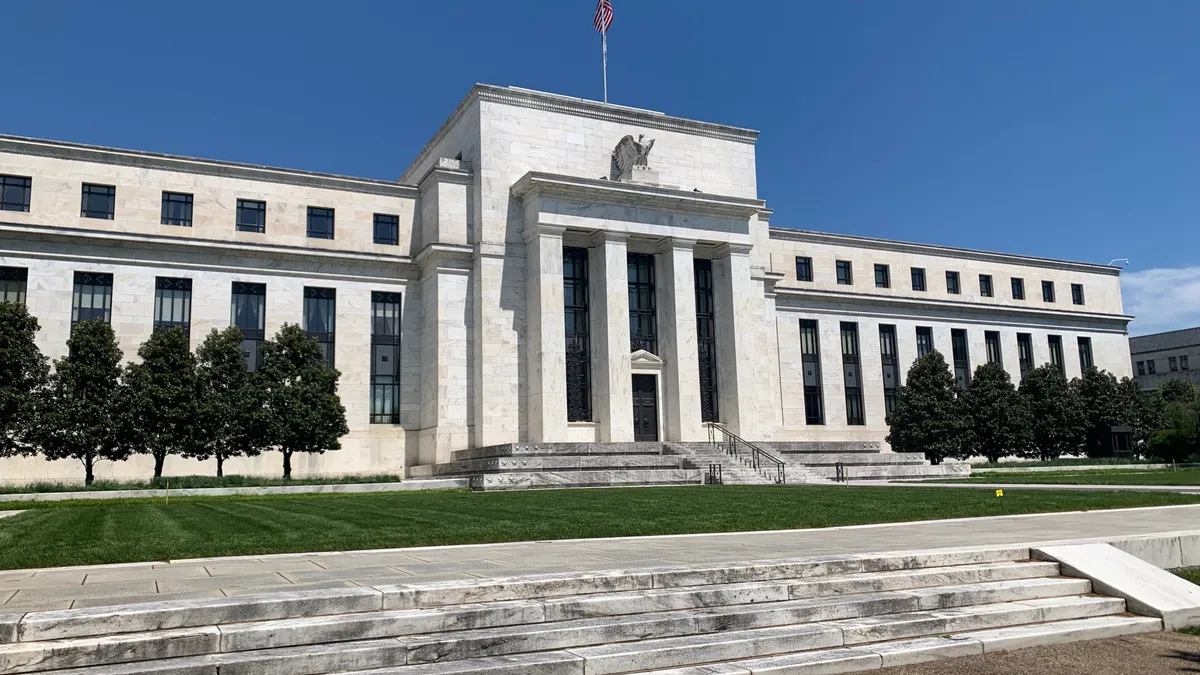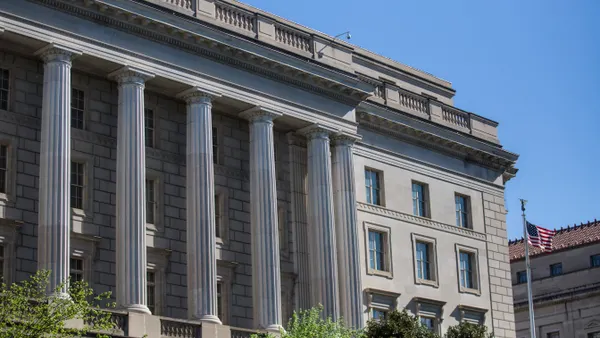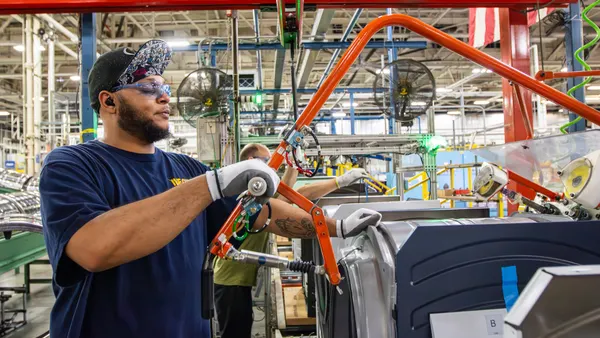Dive Brief:
- Households that received $1,400 checks for each eligible adult and child, as authorized in March, plan to spend just 24.7% of it on consumption, and will use the rest to either pay down debt or increase savings, according to a study by the New York Federal Reserve.
-
“Fiscal support continues to impact predominantly savings instead of consumption, with households planning to use the third relief payments mostly to pay off debt and save,” the New York Fed said.
-
After three rounds of federal stimulus checks, “spending as measured by real personal consumption expenditures (PCE) remains below pre-pandemic levels of February 2020, while the personal savings rate stood at a striking 19.8% in January,” it added.
Dive Insight:
The U.S. relies heavily on consumer spending for economic growth and business well-being, with PCE accounting for about 68% of gross domestic product, according to the St. Louis Fed.
The first two rounds of stimulus payments to households coincided with a 3% increase in real aggregate consumer spending and a 9.7% increase in real personal income in January, the New York Fed said.
But consumers are not spending at the same pace they did before the onset of COVID-19, the New York Fed said, noting “an environment that continues to be characterized by constraints on many activities and by high unemployment, as well as high uncertainty about the duration and continued economic impact of the pandemic.”
Businesses may more confidently rely on a rebound in consumption from an acceleration of economic growth spurred by gains in vaccinations and business reopenings.
The business outlook hinges to a big degree on whether the U.S. can curb the coronavirus, Fed policymakers said on March 17 at the end of a two-day meeting.
“The path of the economy will depend significantly on the course of the virus, including progress on vaccinations,” they said. “The ongoing public health crisis continues to weigh on economic activity, employment, and inflation, and poses considerable risks to the economic outlook.”
Policymakers during the meeting raised their forecasts for economic growth based on progress in vaccinations and the impact from record fiscal stimulus, including forgivable loans to small businesses, checks sent to eligible households and other aid.
U.S. GDP will likely expand 6.5% this year, or the fastest pace since 1983, according to the Fed. In December, they forecast 4.2% growth for this year.












